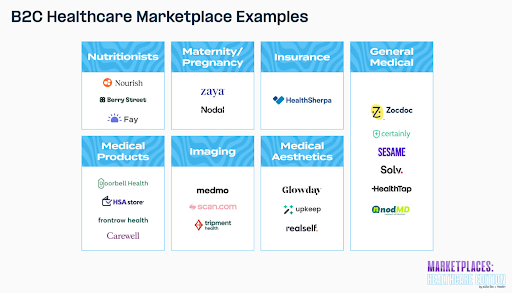
Ortho111 #12
Jeff Bezos says, “Brand is what people say about you when you’re not in the room.”
Not bad.
Here’s what a CEO customer recently shared in a call, and I paraphrase, “Our name will outlast any employee working here. It’s our job to protect it.”
Better.
Built into that statement is a sense of cultivated timelessness and pride. A mindset bigger than any single department.
The value of brand is rising for orthopedic groups. Competition is stiff, and patient loyalty is critical.
”Do they know our name?” isn’t enough to sustain growth.
Today, we’ll explore a key facet of brand beyond awareness and reputation that I think is critical for decisions many groups will make this year:
The impact third-party marketplaces have on brand loyalty.
At their core, marketplaces connect buyers and sellers at a central point.
The internet – being both hyper-local and global, infinitely scalable and targeted – unleashed the full potential of marketplaces. And ever since, digital marketplaces have become the go-to model for aspiring entrepreneurs.
Few, if any, industries, products, and services, have been left untouched by the digital marketplace revolution. Uber, eBay, Doordash, AirBnB, Expedia – All digital marketplaces.
Healthcare is no different.
Many digital health marketplaces have been around for a while – Zocdoc, Healthgrades, and the like.

Notably, ZocDoc and other scheduling or directory-based marketplaces have long had a presence in orthopedics.
However, I see a newer crop of marketplaces impacting orthopedics:
Each of these marketplaces could add value to your practice. They promise and usually deliver initially, on driving new patients. They are relatively low-cost and low-risk arrangements.
So depending on your practice and the marketplace in question, I can see it being a good decision to work with them.
The big question is short-term vs. long-term dependence, and the impact that has on your brand.
If a large percentage of your patient population comes from one of these marketplaces, what happens if they change their routing algorithm or pricing structure?
As with all marketplaces, the ultimate customer is the demand-side (i.e. patient) and they will do all they can to make that customer happy. It may not start that way, because they need the supply-side (i.e. providers) to create the marketplace, but over time it will end there.
In the years to come, many of these marketplaces will be a race to the financial bottom and will align consumer loyalty to the marketplace, not the provider.
All referrals are not created equally. And a “referral” from a marketplace comes with strings attached.
Let’s take a look at the traditional PCP referral. A PCP refers their patient to you because they cannot or should not provide care to that patient. Yes, you benefit financially, but so does the patient. They get the care they need.
The PCP is not in your business. Because they’re not in your business, the patient is both your patient and the PCP's patient. Therefore, investing in building PCP relationships, like many of you do, puts value into your brand.
If Teladoc or Zodoc, referred you the same patient, that’s their patient, and you’re the service provider.
Once the service is done, they expect the patient to come back to them. When that same patient has another orthopedic need, they will go back to the marketplace and potentially be directed to a different entity.
In this case, your brand loses value.
Regardless of your stance on marketplaces, they are here to stay. Determining which ones you work with and how will be the critical question.
My only advice is to never sacrifice your brand to build theirs.